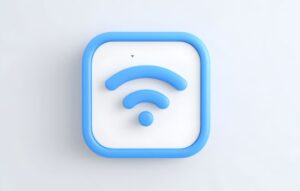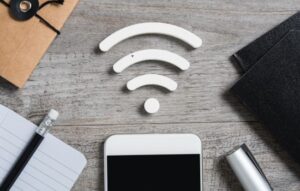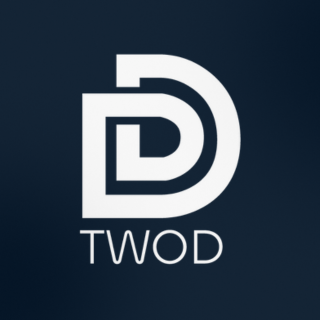mySugr 3 Diabetes Tracker Log
.4.6Information on size, installation and warranty may vary according to official updates.
In the world of digital marketing, staying on top of mobile health trends is not optional: it is essential. Today we will analyze how the free apps to monitor glucose they have become fundamental tools for both users and health professionals, clinics and corporate well-being campaigns.
You will learn benefits, selection criteria, key features, common challenges and in the end you will discover concrete examples of free apps that really work. We go step by step to make this content useful, well positioned in search engines and easy to digest.
Why a glucose app?
Diabetes and conditions related to blood sugar levels are among the most growing medical concerns. Have an app on your cell phone that allows:
- record glucose values regularly,
- detect trends (rises, declines, postprandial peaks),
- share data with health professionals,
- integrate reminders,
... is tremendously valuable for prevention, therapeutic compliance and improving quality of life. From a marketing perspective, it is also an opportunity to create community, build user loyalty, generate educational content and position your brand/service in health niches.
What a successful professional demands when choosing a good application
Before recommending options (which come at the end), a marketing and health professional considers several essential criteria:
- Privacy and data security
First of all: comply with local/regional data protection laws (General Data Protection Law, GDPR, HIPAA, etc.). If the app stores or transfers sensitive data, it must have encryption, clear usage policies, export/delete option. - Ease of use and user experience (UX)
A clean interface, with large buttons, clear graphics, the possibility of entering data quickly. Fewer clicks, the better. A satisfied user recommends it, uses it often, enters real value. - Minimum key functions
- Glucose recording (manual or automatic if you have a compatible sensor).
- Trend charts (by day, week, month).
- Alarms or reminders if levels are out of range.
- Data export (PDF, CSV) to consult with doctor.
- Integration with other health apps if possible (for example physical activity, nutrition apps).
- Technical compatibility
That it works on Android and iOS, that it can synchronize with external sensors if the user has them, or at least allows data to be imported if different equipment is used. - Free vs monetization model
Many apps are free but with limited functionality, ads or in-app purchases. You have to review what is offered without paying, and if that “gratis” really satisfies what is necessary. - Support, updates, community
That there is good technical support, updated reviews, active user feedback. In marketing, see what is said in forums, social networks, app stores. That greatly influences adoption.
Challenges that usually appear
Although apps have a lot of potential, they are not without problems:
- Data accuracy. If the app depends on manual glucose input, errors may occur.
- Connectivity with real sensors. Not all of them allow synchronization with continuous glucose measurement (CGM) devices.
- Hidden costs. Many free apps have to pay to unlock advanced features or premium versions.
- Language or localization barriers. That it does not have a version in the user's language, local units of measurement, adjustments for food culture.
- Long-term adoption. User uses the app the first few days but abandons it if they do not see immediate benefit or it is uncomfortable.
Marketing strategies applied to these apps
As a marketing professional looking to launch or promote one of these apps, it is recommended:
- Educational content: blogs, videos, infographics on how to monitor glucose, risks of high values, benefits of detecting trends.
- Royal testimonies from users: stories that show how the app helped with motivation, daily management, better relationships with doctors.
- SEO oriented to local search: use keywords such as “app gratis glucose”, “monitorar azucar mobile”, “app diabetis gratis + ciudad o ciudad”, etc.
- Collaborations with health professionals: endocrinologists, nutritionists, medical institutions for app recommendation.
- Gamification or incentives: points, achievements, daily reminders, rankings if there is a community; this drives frequent use.
Good SEO and readability practices
To ensure that this type of content achieves good positioning and is read well, the ideal is:
- use keywords relevant such as “app gratis glucose”, “monitor de glucosemóvil”, “control gratis sugar”, “register glucose cellular”, etc.
- structure with clear subtitles, short paragraphs (3 5 lines), use of lists.
- include bold to highlight what is important.
- incorporate links if you are referring to reliable organizations, medical guides.
- take care meta description: brief, summarizing what it offers, having a hook.
Real examples of effective free applications
After analyzing criteria, these are some apps that meet many of the aforementioned requirements. Here are the specific tests, so you can see what they offer.
Featured examples
- Glucose Monitor
This app makes it easy to track and manage glucose levels (and other data such as blood pressure) with graphical views, statistical reports, email or PDF export, reminders, simple and customizable interface. Apple - iGluPal
Allows you to record glucose measurements, add notes, view history, synchronize data with health apps on the operating system, export data. It has a free version with useful basic functions. Apple+1 - Blood Sugar Tracker 3 Glucose
Functional company that integrates daily log, trend graphs, HbA1c estimates, reminders, medication management, compatibility with different glucose units. Very valuable if you want to keep complete control. Apple - Glooko and mySugr
Both are mentioned in analysis of free apps that synchronize with glucose meters, allow you to see trends, share with professionals, record meals and insulin. diaTribe+1
How to choose the best one for you or your target audience
Based on what we've seen, here's a quick guide:
| Ask | What to evaluate |
|---|---|
| Do you need to sync with real sensor (CGM) or just manual registration? | See if the app accepts sensors, hardware integration. |
| How often will you use the app? | If it will be daily, a simple interface and reminders are key. |
| Do you share data with a doctor? | Export and common formats (PDF, CSV) are important. |
| Does your population speak another language? | See translations, location, units of measurement (mg/dL vs mmol/L). |
| Budget for extra functions? | See how much “Pro” version costs; if free covers the essentials. |
Future trends
Looking ahead, some innovations that are already being developed or waiting to be consolidated:
- better integration of continuous sensors with free apps;
- smarter AI-based alerts for early warnings;
- personalized dashboards according to user profile (age, type of diabetes, lifestyle);
- integrating data with nutrition, exercise, sleep to see how everything impacts glucose;
- communities in the app for mutual support, challenges, sharing learning.
See also:
- Free applications to extend mobile battery
- Free applications to learn mobile karate
- They discover free apps to recover photos 📸
- Free applications to watch movies online
- Free applications to play guitar from home 🎸
Conclusion
Cellular glucose monitoring through free apps is one of those low-cost but high-impact tools, both for public health and for marketing digital products. If you comply with privacy, functionality, good UX and clear communication, you can achieve a product or campaign that really adds value.
If you want, I can check apps in Spanish and in Brazil free that work without the need for an expensive sensor, and put together a specific list for your audience. Are you interested in doing it?







